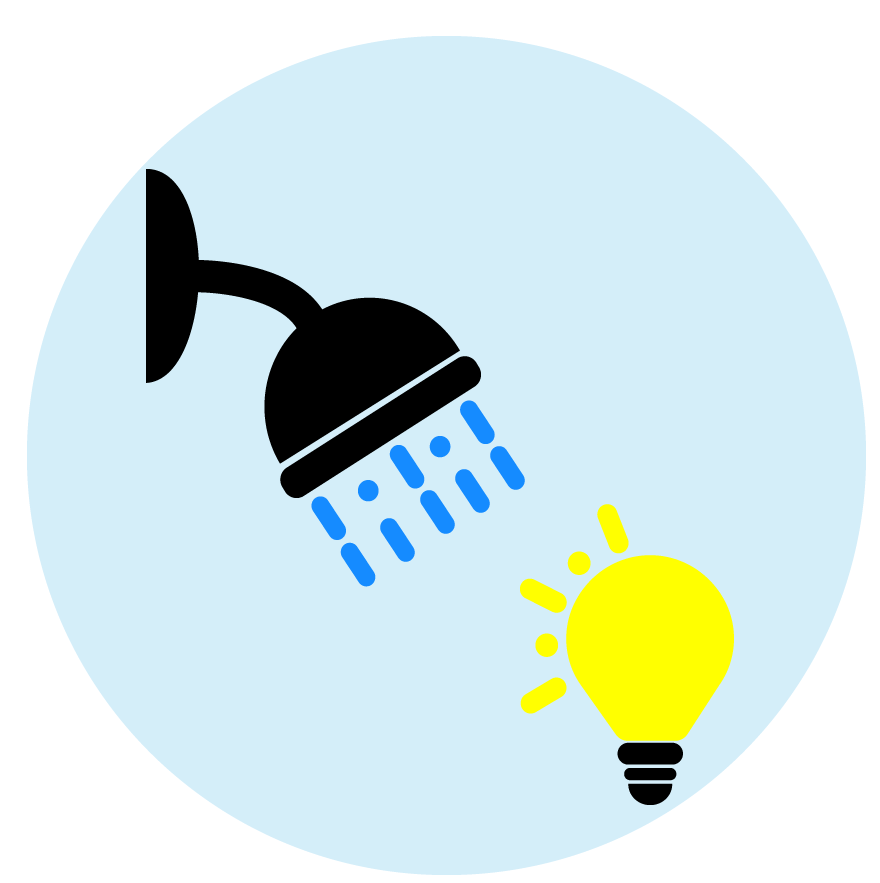The Aha! Moment
Why we get our best ideas in the shower

Creative thoughts or solutions often emerge suddenly as ‘aha! moments’ when we least expect them.
Not when we’re sitting at the desk trying to actively think about a problem – but, when we are in the shower, walking, cycling, or housekeeping.
Ask creative writers and physicists to record their most creative idea in a day:
20% of their most meaningful ideas come when they’re doing something else than work, washing dishes or taking a shower.
Why is that?
Why is it that sometimes getting to the right idea affords time, effort and structured analysis, while other times ideas spring to mind suddenly without effort?
|
Insight-like solutions are special ① They often appear to overcome some form of creative impasse. ② They tend to be remembered better than solutions that come during a more gradual thought process. ③ They’re often experienced as pleasurable and rewarding. |
You probably know this situation too well: You’re sat at work, you’ve tried and tried but none of the conventional approaches seem to work.
What now? Give up and set aside the problem?
Strange as it sounds: Taking a step back and refraining from actively searching for the solution can be a key to success.
Engage instead in a different activity, your attention will shift away from the task and your mind will start to freely wander.
That’s actually when in the back of your head creative ideas start to incubate.
Most people have their moments of insight during mind-wandering in the shower (30 %), in transit (13 %) or during exercise (11 %).
What is mind wandering? And, why does it help?
Mind wandering means having free flowing spontaneous thoughts, where thoughts are anywhere but at the task at hand.
Mind wandering allows us to revisit creative problems in other contexts and to consider problems from alternative vantage points. This is how new, unique ideas can spring to mind and overcome the impasse.
But not any activity will lead to productive mind wandering.
A study found that mind wandering boosts creativity during a moderately engaging activity but not during a boring one.
After all, the popular saying is that creative ideas come in the shower (the “shower effect”) and not on the couch.
So, what exactly happens in the shower?
Taking a shower is an activity that is moderately engaging: it is not overly demanding. It takes some of your attention, but not all of it.
It is therefore propitious to mind wandering. Thoughts can move freely and draw novel associations, creative ideas can incubate in the background.
A still better example is when you take a walk in nature: You’re suddenly placed in a rich environment with many cues that inspire thoughts.
But on a subconscious level, this environment also puts some external constraints on your thinking.
Instead of mind-wandering in completely random and unrelated directions, it will be coupled: occasionally focused on the environment, but also moving away from it.
Why constraints matter
Creative cognition is believed to rely on a combination of free, spontaneously generated ideas and the ability to evaluate these ideas against the constraints of a task or problem.
Constraints can be self-imposed (internally generated). But they may as well be external.
The researchers hypothesize that the external constraints that come with moderately engaging activities enhance creative mind wandering by helping novel associations and by inhibiting unproductive thoughts.
Why not just stay on the couch?
Lie on the couch: Your mind will wander – could be, this time away from boredom.
However, because boring activities lack the constraints of a rich environment, your thoughts may just turn to quotidian concerns, daily to-do lists or unrealistic fantasies:
Thoughts that are likely not relevant or germane to your creative problem.
References